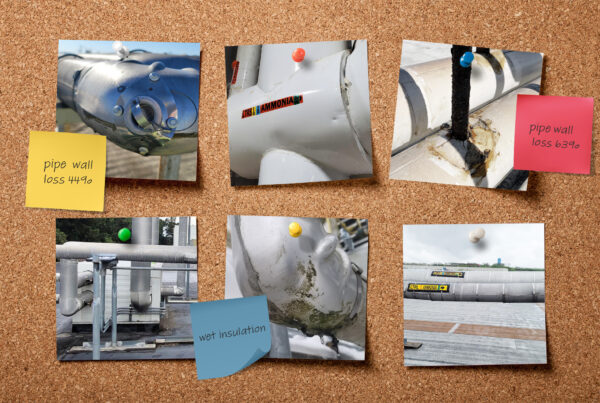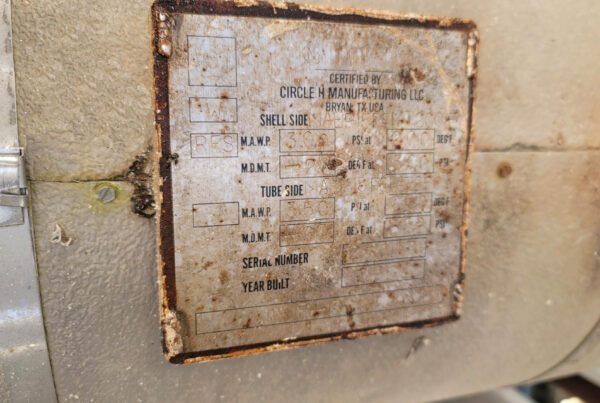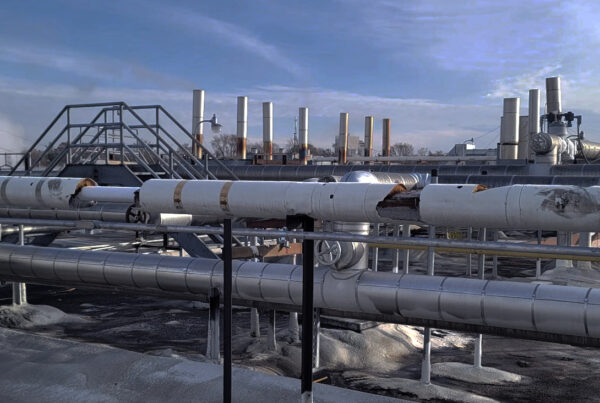The ammonia plant I am responsible for has hundreds of thousands of pounds of ammonia flowing through its pipes. Its intimidating size is daunting enough that the last inspector I brought in to provide an estimate just looked at the place and drove off.
As I continued my search for the right contractor to inspect my plant, additional pressure was wearing at me. A serious accident had occurred a year prior, and the entire place had been under a microscope ever since.
I called Gamma Graphics Services (GGS) and insisted they send someone to the plant to get a visual before providing an estimate. I wanted to make sure they knew what they were getting into, and I also wanted to assess their competence before committing to them.
The GGS engineer they sent, John, surveyed the site and estimated it would take a month to complete the evaluation. He did not seem fazed by the task ahead, and I accepted the bid.
A few days into testing, John came to me to explain how the readings from the LIXI Profiler—his tool for measuring the thickness of the pipes—were indicating that a certain section of pipe on the roof was corroded. He asked me for permission to remove the insulation and confirm the damage.
I gathered my insulation crew and accompanied John back to roof. My shadow for the past year, Mark, trailed closely behind. While the crew removed insulation from the pipe, Mark scanned the rooftop.
“What are all these red ribbons you’ve tied to the pipes?” he asked John.
“Oh, I flagged those spots because I smelled ammonia in those locations—signs of a leak,” replied John. “Normally, we just note those in our reports, but I had some plastic ribbon with me and just figured I would mark them on the spot.”
Mark probed further. “Just out of curiosity, why flag it now? Wouldn’t leaks like that be noticeable any time?”
“Well, actually no.” John explained further, “It depends on the timing of the valves’ operation. Sometimes, the leak is only evident when the valve is opening or closing.”
Meanwhile, the crew finished removing insulation and sure enough, the pipe was corroded where the Profiler had indicated. John continued his inspection, while the rest of us went back inside.
The next day, I informed John that for the remainder of the job, he would be accompanied by an insulation crew and a repairman.
John looked at me quizzically and asked, “Why?”
“Do you know who that was asking you questions yesterday?” I asked. “Mark is an OSHA inspector who has essentially taken up residence in this plant since we had an incident last year. He was really impressed that your pipe testing equipment could detect problem areas that aren’t visible to the naked eye, as well as the thorough nature of your study.”
“He told me not to wait until after your report to take action,” I continued. “He specifically asked—without really asking—‘Why wait for that when you have someone up there right now identifying problem areas that you can fix immediately?’ Mark needs to feel confident that we are taking the right steps in providing a safe environment here. So, if he makes a recommendation like this, I’m going to listen to him.”
Mark had noticed more than just red ribbons on the roof. He saw that I had selected an experienced contractor with a high level of expertise to ensure the plant’s pipes were safe—a tangible sign of progress toward meeting OSHA standards. I wish I could say he was that impressed with all of our vendors!



